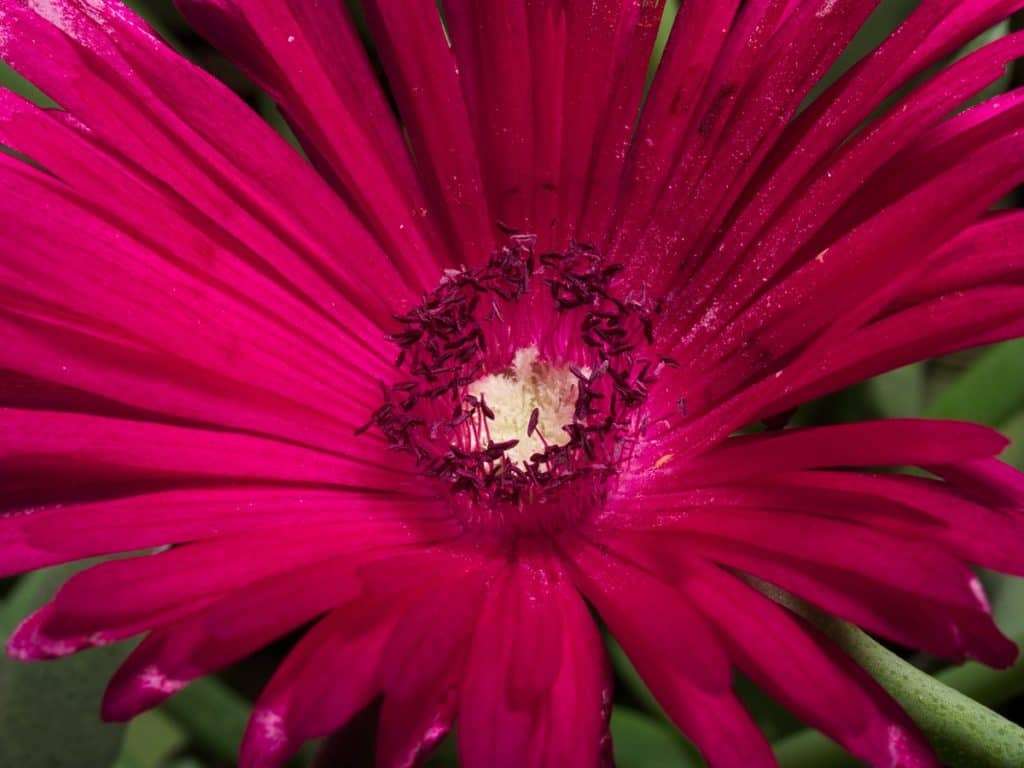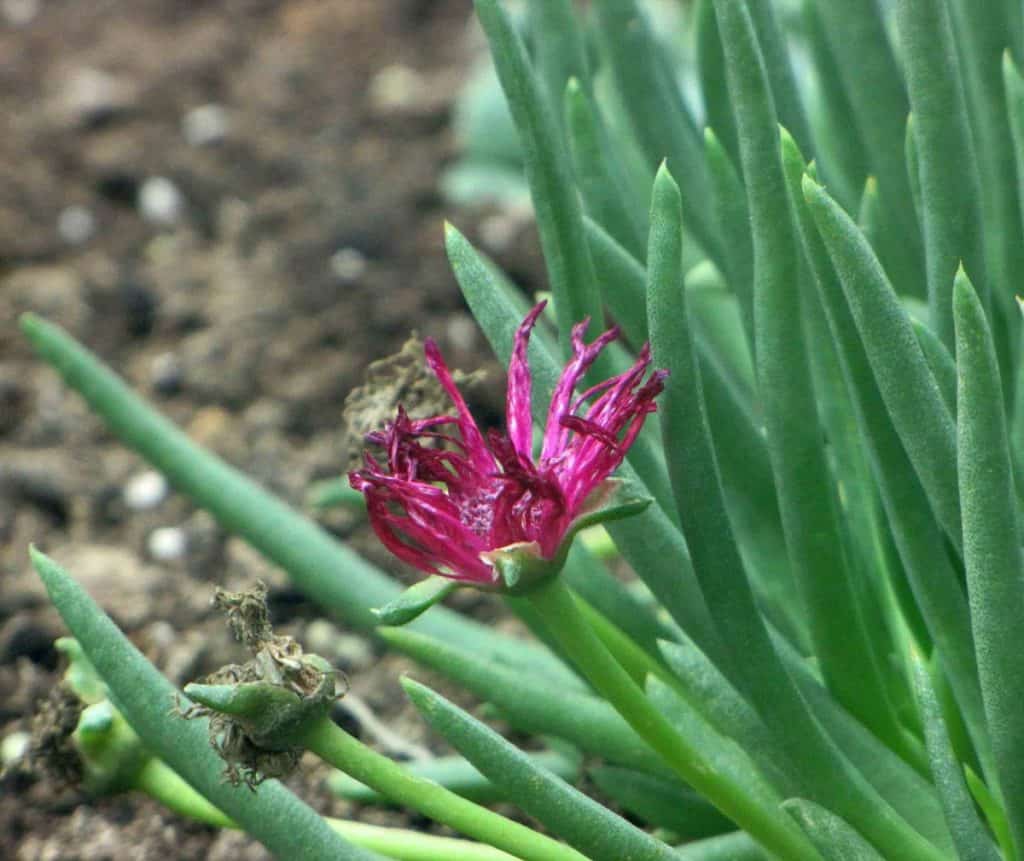Cephalophyllum Red Spike: Characteristics and Care
Succulents are crazy popular these days, and the Cephalophyllum Red Spike is about to become your new obsession! With its vibrant pink flowers and striking red foliage, this low-growing beauty will steal the show in any garden or succulent collection. Keep reading to discover insider tips on keeping this trendy plant looking its absolute best.

Contents
About Cephalophyllum Red Spike
Native to South Africa, the Cephalophyllum Red Spike (Cephalophyllum alstonii ‘Red Spike’) is a mat-forming succulent that maxes out at around 3 inches tall but can spread up to 18 inches wide. Its fleshy leaves grow together to create a dense, carpet-like appearance that’s perfect for ground cover or rockery planting. When winter and spring roll around, get ready for a dazzling display as rich pink flowers emerge from the foliage.
Related Post:
27 Types Of Cephalophyllum Succulents [With Pictures]
How to Care for Cephalophyllum Red Spike
Light
This sun-lover craves bright, direct light to truly thrive. Outdoors, position it in a spot that gets at least 6 hours of full sun per day, ideally in the morning. If temps climb above 90°F, provide some afternoon shade. For indoor plants, a south or west-facing window is ideal, or use a grow light placed 6-12 inches away for 12-16 hours per day.
Watering
With its succulent leaves designed to store moisture, the Red Spike is drought-tolerant and requires infrequent watering. Generally, give it a good soak only once the soil is completely dry, about every 2-3 weeks. Stick your finger in the soil and water thoroughly when the top 2 inches are dry. Overwatering is a no-no!

Soil
Like most succulents, the Red Spike needs a very well-draining potting mix to prevent rot. A cactus/succulent blend amended with extra perlite or coarse sand works perfectly. The soil should have a loose, slightly gritty texture. This plant can handle a pH range of 6.1-7.8.
Fertilizing
Feed your Cephalophyllum Red Spike with a balanced, water-soluble fertilizer diluted to half-strength at the start of the growing season. Avoid over-fertilizing, as too much can lead to leggy growth.
Climate
Hardy in USDA Zones 9-11, this plant thrives in warm, dry conditions. It actively grows during spring and summer but can continue growing through winter in milder climates. Ensure proper drainage and reduce watering during the cooler months.
Related Post:
10 Most Beautiful Flowering Succulents [With Pictures]

Pests and Diseases
While generally hardy, the Cephalophyllum Red Spike can sometimes fall victim to common houseplant pests like mealybugs, spider mites, scales, and aphids. Keep an eye out for any signs of infestation, such as white cottony masses, webbing, or sticky residue on the leaves. Promptly isolate affected plants and treat with an insecticidal soap, neem oil, or other suitable organic pesticide.
Good air circulation and avoiding overwatering goes a long way in preventing fungal or bacterial issues. However, if you notice signs of rot or disease, it’s best to discard severely affected plants to prevent spreading.
Pruning
The Cephalophyllum Red Spike has a naturally tidy, compact growth habit, requiring minimal pruning. However, you can groom the plant by removing any dead, damaged, or unsightly growth using clean pruners or scissors. Early spring, just before new growth emerges, is an ideal time for pruning.
Potting and Repotting
This fast-grower may eventually outgrow its current digs, signaled by roots poking out the drainage holes or slowed growth. When it’s time to repot, choose a container only 1-2 inches wider than the previous one to prevent the soil from staying overly moist. Gently brush off any old soil from the roots and replant in a fresh cactus/succulent potting mix.
Cephalophyllum Red Spike Propagation Guide
Introducing new Cephalophyllum Red Spike plants to your collection is a breeze! You can propagate this succulent from seeds or cuttings:
From Seeds
- Prepare seeds by soaking them in water for 24 hours before sowing.
- Fill a seed tray with well-draining cactus/succulent mix.
- Sow seeds on the surface and cover with a thin layer of sand or grit.
- Keep the soil moist but not waterlogged until seeds germinate, typically within 2 weeks.
- Provide bright, indirect light and warm temperatures (70-80°F).
From Cuttings
- In late spring or early summer, carefully snip off a healthy stem section with leaves.
- Allow the cutting to callus over for 2-3 days before planting.
- Dip the calloused end in a rooting hormone (optional but encouraged).
- Plant the cutting in a well-draining soil mix, burying about 1/3 of the stem.
- Water sparingly until roots establish, then care for as a mature plant.
With its irresistible charm and low-maintenance nature, the Cephalophyllum Red Spike is a must-have for every plant enthusiast. Embrace this trendsetter and watch as it transforms your space into a vibrant, captivating oasis!
